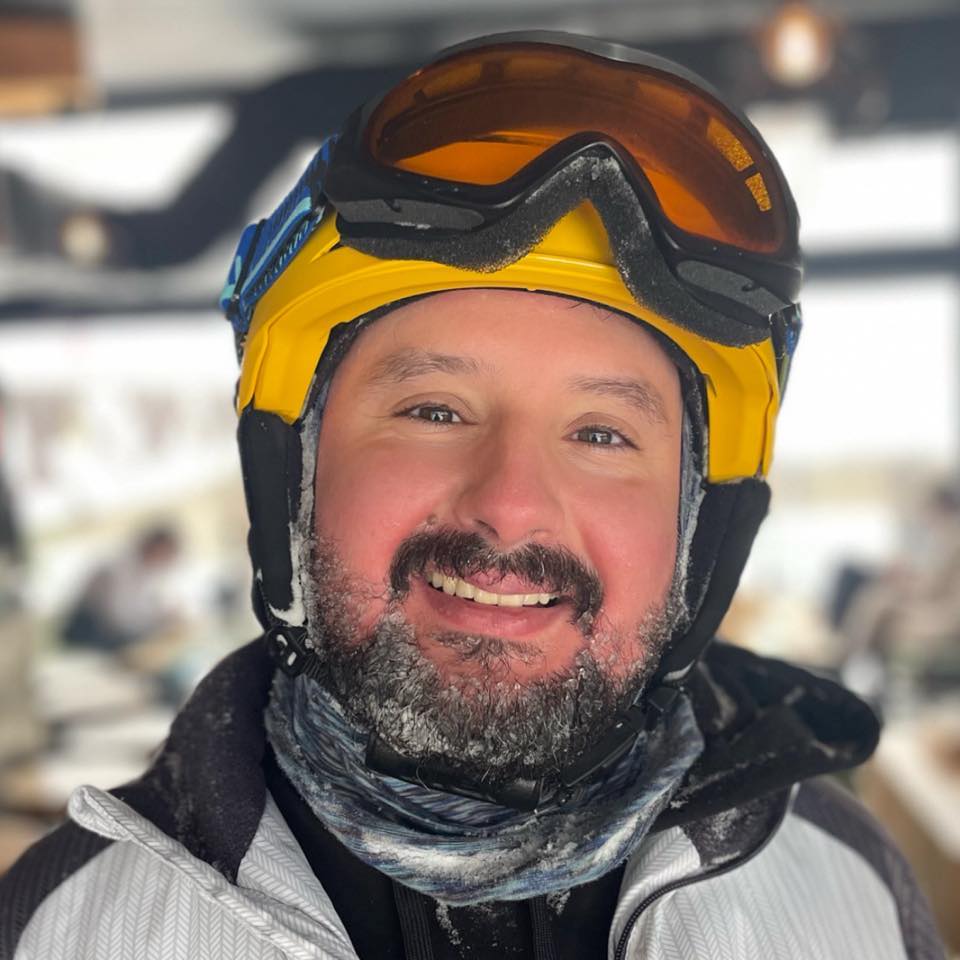Anastasiya Kireeva, Spilno.School founder: “Simulator.Company is a technology to create the maps of learning”
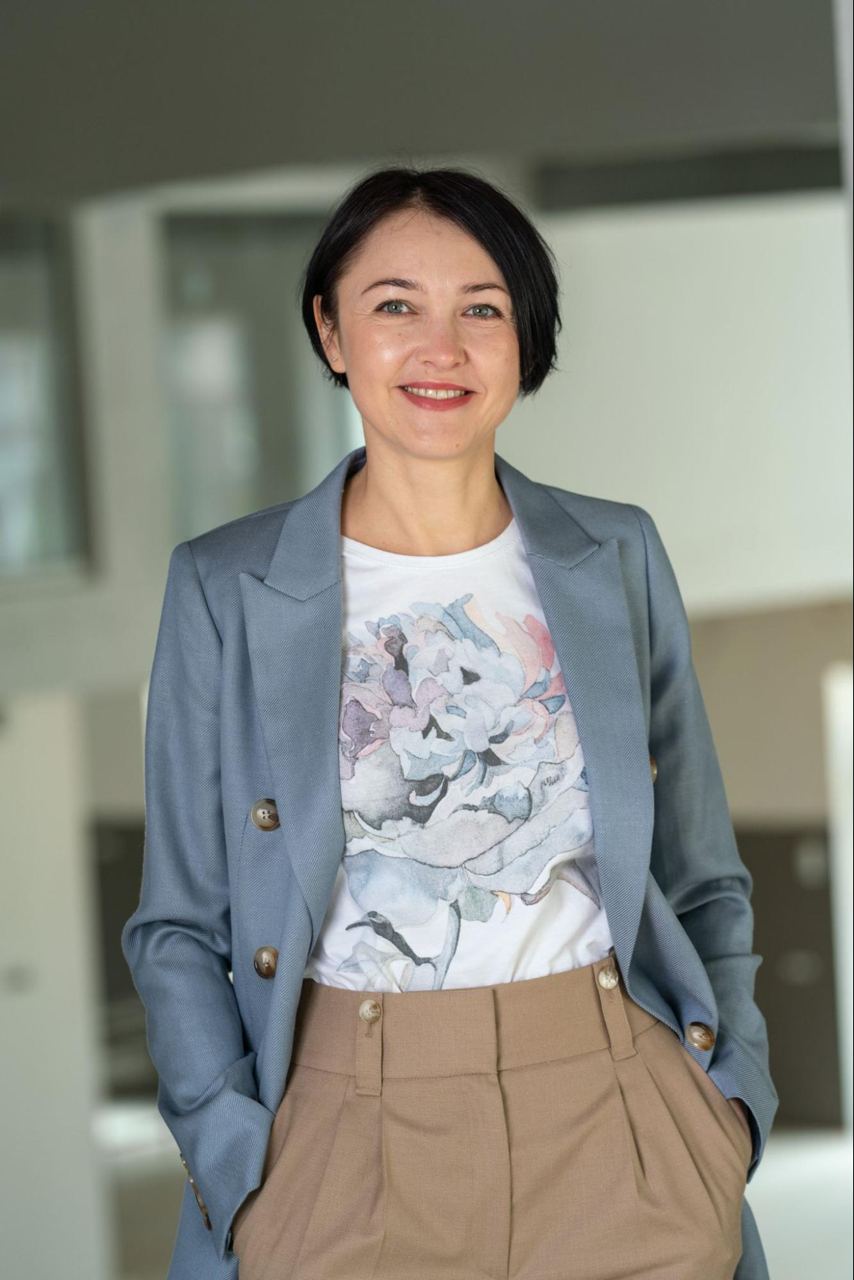 |
|---|
| Anastasiya Kireeva, founder of the non-profit and self-sustainable project "Spilno.School" |
Anastasiya, please, tell us what vision you pursued when creating the Spilno.School?
I was deeply concerned about the following issue: if the school we know does not suit and is not liked by either children, parents, teachers, business, or society, then what should a new school format be in order to meet the challenges of tomorrow? The old Soviet classroom system was similar to a bus. Pupils are loaded at station A. And they need to be taken to graduation in the 11th grade at station B. Pupils must take a certain route of 5 lessons a day, with clear stops at the end of the quarter, vacations and exams.
Everyone travels the same route. Everything is controlled by the teacher-driver, and the students are just passive passengers. The driver (teacher) is actually a robot in this situation, because he’s just driving in accordance with a program compiled by someone else and issued to the teacher without the right for any changes. A large proportion of all schools in Ukraine continue to pursue the tasks of mass education and operate according to the class-lesson model.
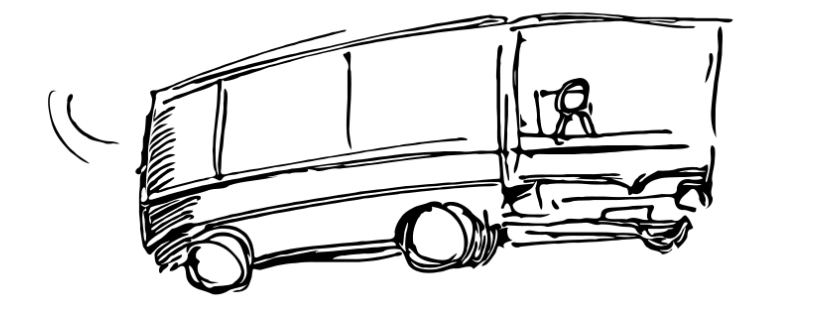 |
|---|
In the old school, students are "objects" on which "the learning process is carried out." Also, students are objects of control by teachers and parents (through grades, diaries, etc.).
But when a student gets the "A" score in math, for example, what does that really mean? What is "A"?
Any scales or ratings can still only tell us whether the student remembers what he was told, or whether he practiced doing what he was shown as a model. But we understand that this in no way brings us closer to a holistic perception of a person who is studying, as well as to an understanding of whether the child is ready to act in a modern world.
International organizations (UNESCO, Organizations of International Cooperation) and research groups at the level of states in various countries during the last decades have been purposefully searching for new goals and meaning of education and continue this work until now. But the two decisions reached somewhere in the late 70s and early 80s remain the main vectors directing global changes in education to this day.
The key principles are lifetime learning and competencies as the goal of working with educational content (goal-oriented education). That is, as a result of certain educational activities, a student must not only know something, but also be able to apply knowledge to solve problems and have such an attitude to life that would motivate him to constantly adapt his competences to changing contexts in the future.
If we apply these fundamental conclusions to the school, it means that in order to achieve such results, instead of “transferring the knowledge”, we create a complex educational environment.
We need to create a simulator or training ground, which allows students to make real decisions within the scope of their responsibility. Namely, decisions about all educational events that happen to them at school.
We need to create a simulator or training ground, which allows students to make real decisions within the scope of their responsibility.
Therefore, we need to make sure that the educational environment is rich in significant specialists, useful information, social connections, and various spaces that encourage curiosity. It is not enough for a graduate to remember, say, the Pythagorean theorem, when in the future he needs to calculate how many tiles to buy for the roof.
Instead of believing the first thing you hear, you should be able to distinguish possible falsehoods, check information from different sources and draw appropriate conclusions, as well as be able to act to achieve your goal, and not be a hostage to manipulation.
I will continue the tourist metaphor. A modern school should create such opportunities so that the student can follow his own path of learning. Only in this way can he learn to be an Actor of self-education during his whole life. The school in this format will provide him with maps and convenient navigation for orientation: "Where am I?", "What are the route options?", "Where should I go next?".
Only in this way can he learn to be an Actor of self-education during his whole life.
Spilno.School started in 2015 with 10 students. We were growing step by step, so that the form did not overtake the quality. But at each stage there was a vision and a strategic plan of development towards a fully-fledged school of a new generation, a school that is valuable to children, parents, teachers and also contributes to the good of society. Every year we almost doubled the number of students. Last September, 160 students started their education in a building designed by us and built for us, capable of accommodating 300 students and 100 preschoolers.
Imagine the amount of input data and the various processes that need to be coordinated in a clear and structured way, while keeping the necessary amount of flexibility for choices by all participants under the rapidly changing circumstances. Different ages, number of groups of children, compulsory classes and optional courses, self-organized events, dozens of teachers and their working mood. Add to this educational projects, individual profile of each student and personal information about students’ actions, behavior in the learning process – both online and offline...
By the time we reached 80 students, we knew we had reached the limit of what we could orchestrate with Google tools, messengers, email, and the standard BaseCamp project management software. That’s why we began to actively look for IT-solutions tailored to the needs of schools.
We searched, but found nothing relevant. There were several such attempts, and each time we encountered the fact that the existing platforms and LMS solutions had their own vision of education embedded in the software. Unfortunately, this logic often represented the old-school framework of the class-lesson model. All the possibilities of changes were limited to minor tweaks here and there.
The implementation of any of such services would mean that Spilno.School needed to bind to the "Procrustean bed" of someone else’s vision.
Google Classroom, Human, School today didn’t fit our needs. These services do not think in terms of maps or matrixes of competencies. By default they have features of marks and assessments, and don’t provide any meaningful autonomy for students.
At the same time, they offer a bunch of unnecessary functionality with calendar plans, hardcoded schedules, slots for lessons, grades, an electronic diary, so that parents could control their children. What was important for us was not there. And they do not make any drastic changes in their ready-made solutions.
Last year, we tried to work with a service that provides universal tools for managing companies in various fields and was ready to develop the functionality for us – JSolutions. But in the end, we refused to cooperate: every detail required a clear technical description from our side. And that’s not always possible.
Even if we were able to come up with a technical description, then we needed to wait for programmers to do the job, wait for testing and bug-fixing, wait for the next release. This is not the speed and flexibility we like to pursue in the Spilno.School.
The war made significant adjustments to this year's plans. We have already understood that the most valuable and effective learning of children takes place in direct contact with other people and the environment. Education is always a "chemistry" between people, which occurs through the interaction between people. And Spilno School has everything necessary for the learning process to take place “in real time”. We didn't understand exactly what was going to happen when September started, but we expected Spilno.School to become an even more adaptive educational environment. After all, we had to take into account the distance that emerged between students and teachers in some cases.
So in summer 2022, before the start of the educational year, the task was to combine offline training with online and remote learning. We wanted the educational process to be enhanced with technology. Depending on the case, we arrange online or on-site educational activities.
We do our best on-premises and online. So it wasn't about two separate realities, offline and online. We aimed to create a single hybrid educational environment, the possibilities of which would be expanded due to technology. We were not aiming to create two separate flows: online and offline. We wanted to create an augmented, hybrid, comprehensive educational environment enhanced with technology.
We wanted to create an augmented, hybrid, comprehensive educational environment enhanced with technology.
When I chose Simulator technology, it was important for me to realize that we’d be able to use the tool for our needs, and not vice versa – adapt our valuable unique processes to someone’s tools. We wanted to create a "navigation system", something like “knowledge maps”, which would be simple enough for students to understand, but at the same time closely related to the learning material. So we decided to start using a readily available online content management system and at the same time use Corezoid and Simulator technology for the rest of the digital tasks at Spilno.School.
With Corezoid we get a builder that allows us to develop the learning concepts based on our own educational architecture, and with the ability to quickly and conveniently experiment with the various IT-innovations that constantly emerge.
How do you currently use Corezoid and Simulator technologies?
We have passed only the first stage of their implementation into the Spilno.School processes. However, we discovered a new horizon of possibilities for using Corezoid and Simulator technologies, which was not even seen at first.
We needed technology to build “the learning maps”. Based on Simulator, we developed the prototype of IT-solution, that constantly gives the student the answer to the questions I mentioned above: “Where am I? Where do I start? What do I have in front of me? Where could I go next?”
So far, we have implemented the first two versions of the student workspace and connected it to the Finnish content management system Claned.
Claned allows to create courses, and within courses – provide students with YouTube videos, PDF files, quizzes to solve etc. However, during the work with Claned we found out that a lot of indicators needed for us to track the progress of students (and also to allow students to track their own progress) the platform can’t display.
We were looking for the type of technology that could allow a student to answer the questions: “What possible trajectories do I have? What trajectories are closed for now, but can possibly open in future? How well do I perform? What should be my next step?” Unfortunately, the Claned platform wasn’t able to help us build the solution we needed.
Neither Learning Management System can match the possibilities offered by Corezoid and Simulator technologies. As soon as we realized the limitations of the Claned platform, Corezoid and Simulator developers offered us to implement the whole solution we wanted based on their technology stack.
Neither Learning Management System can match the possibilities offered by Corezoid and Simulator technologies.
So, as of now, we need to deploy a combination of LMS and educational platform for creating and managing courses/learning content, which will perform the following tasks:
- Deliver information to Actors who need it, and when they need it (to the student - "what's my next step?", to the teacher - "how is everyone doing?", to the school – if there are any issues).
- Convenient tools for creating and navigating educational material. Spilno School creates its own integrated content, which is constantly updated and adapted to a specific group of children, and specific educational tasks.
- Dashboards with data for analysis, including for self-analysis by students and teachers.
Tell us more about the learning processes, how they are arranged now and about the problems you plan to solve with Corezoid and Simulator technologies
The mobility of modern families increased drastically in the course of last year. Therefore, Spilno School accepts new children throughout the calendar year. We also provide the opportunity to change the form of education during the year. Someone can start the year onsite, then go remote for 3 months. Or the student can leave the country to study at another school for a year. The war increased this tendency by an order of magnitude.
At Spilno.School we highlight for students the points of entry into the learning process and provide them with understanding where to go next. Students can choose the speed, the way they move, select from various learning trajectories. Talking about the issues, we face the difficulties with orchestrating the communication between all the stakeholders, the speed of data collection and analysis, and the most important – delivering information to the people who most need it.
At Spilno.School we highlight for students the points of entry into the learning process and provide them with understanding where to go next.
We know what motivates and encourages learning most – and that is the instant and multi-layered feedback. Great integration capabilities, the ability to build learning maps, high level of flexibility – that is what we want to see in the technology stack we’d love to use.
Great integration capabilities, the ability to build learning maps, high level of flexibility – that is what we want to see in the technology stack we’d love to use.
Thanks to Simulator.Company, we already built a personal workplace — a place where every student of the school can enter and view basic information about himself and the status of ongoing educational tasks.
I’d like to tell a brief story. In 2015, when the Spilno.School was still very small, I first heard about Corezoid technology and its fantastic capabilities. The father of one of our students shared with great excitement that he needed just one manager to move hundreds of sea containers around Ukraine. And his company was the second largest container operator in the country. He then quickly explained to me how it worked and shared that all of this was orchestrated with Corezoid. I remember thinking at the time: when our School will grow big, I'm going to start using Corezoid to help our school if not with the movement of containers, then with the movement of educational components – just as easily and efficiently.
Spilno.School is a licensed educational institution that operates under the regulation and must deliver the mandatory expected result according to state educational standards, specifically described in terms of competencies. At the regulatory level, Ukraine is no way behind developed countries, and in some aspects we even have such legislative capabilities that overtake conservative Europe.
The situation when a child periodically has gaps in education is common. Clarity is especially needed with those who have joined the school recently or returned after a long break. Someone could also be sick or unable to understand some educational material. It is still necessary to take into account the complicated circumstances in the work of schools: quarantines due to the pandemic, the realities of wartime – air raids, power outages, etc.
We also see how strongly a child's emotional state affects thinking processes and motivation. If a student has a gap or a block in what he knows, the typical reaction is "I don't understand anything" or "I'm stupid, nothing works, so I won't even try."
A periodic "review" is needed to find out what the child needs to repeat or improve in order to gain confidence in his knowledge and abilities. We have our own methods aimed at achieving these goals. In particular, we have matrices that work as a graphic representation of knowledge and competences for the entire period of study according to the main disciplines: mathematics, language, science, social studies, English and the SEL (social-emotional learning) course.
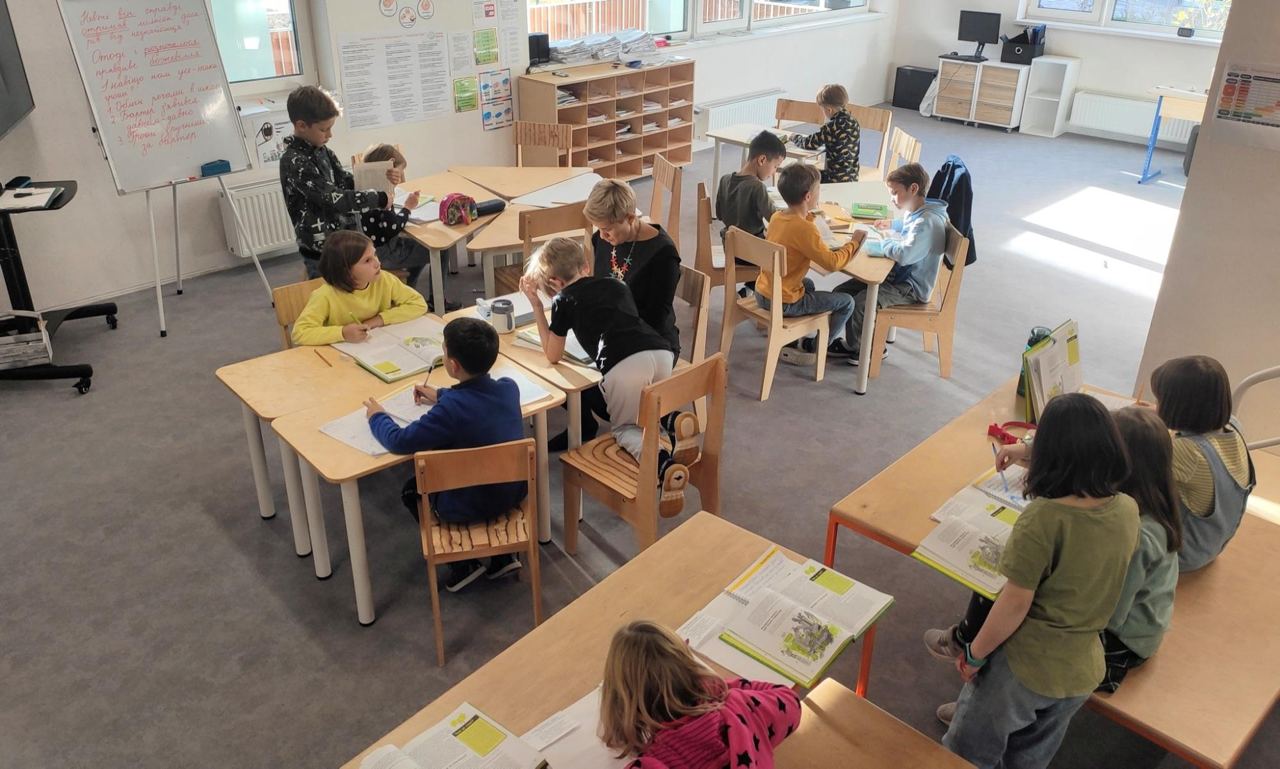 |
|---|
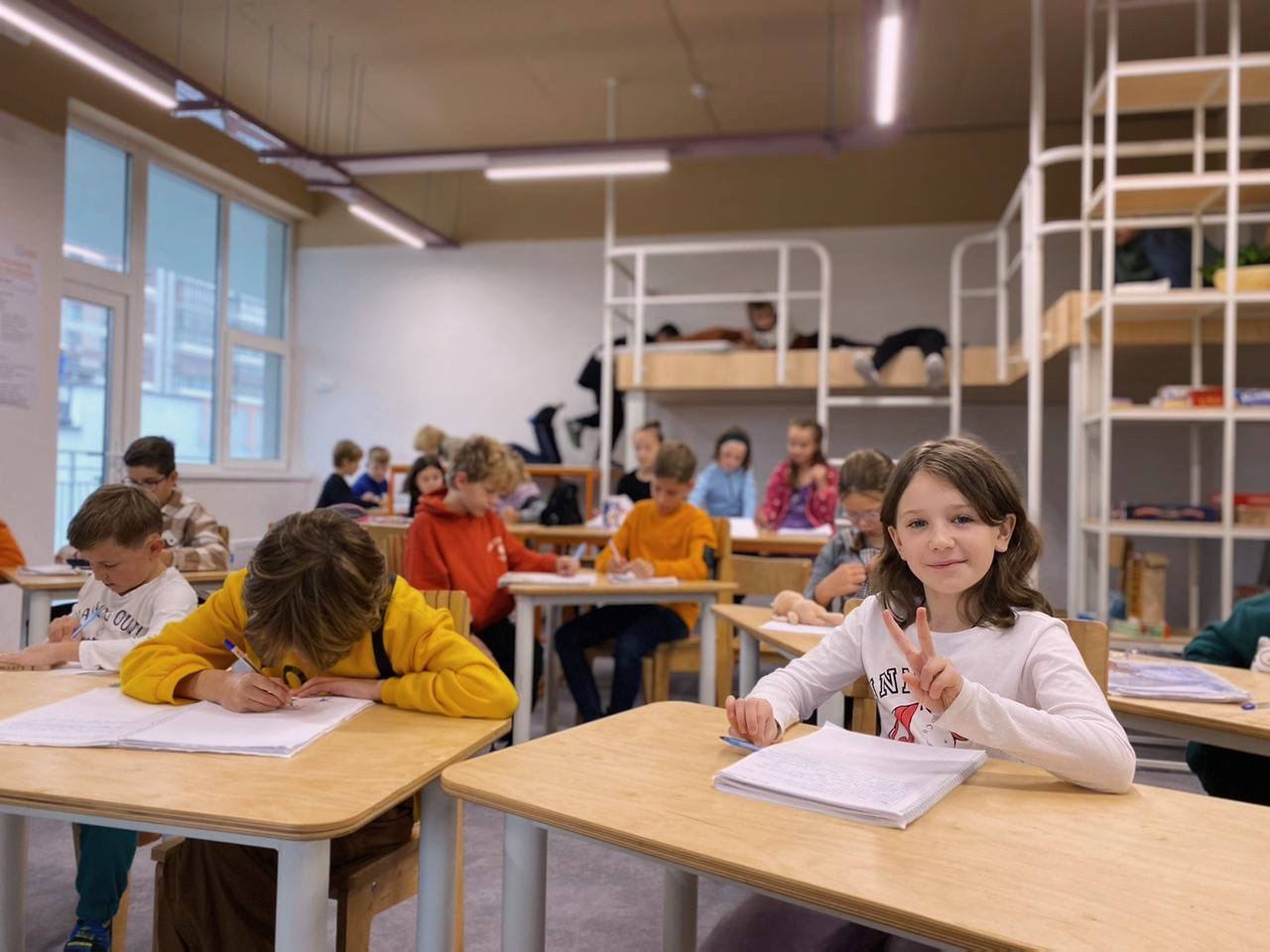 |
|---|
| On-site lesson at Spilno.School |
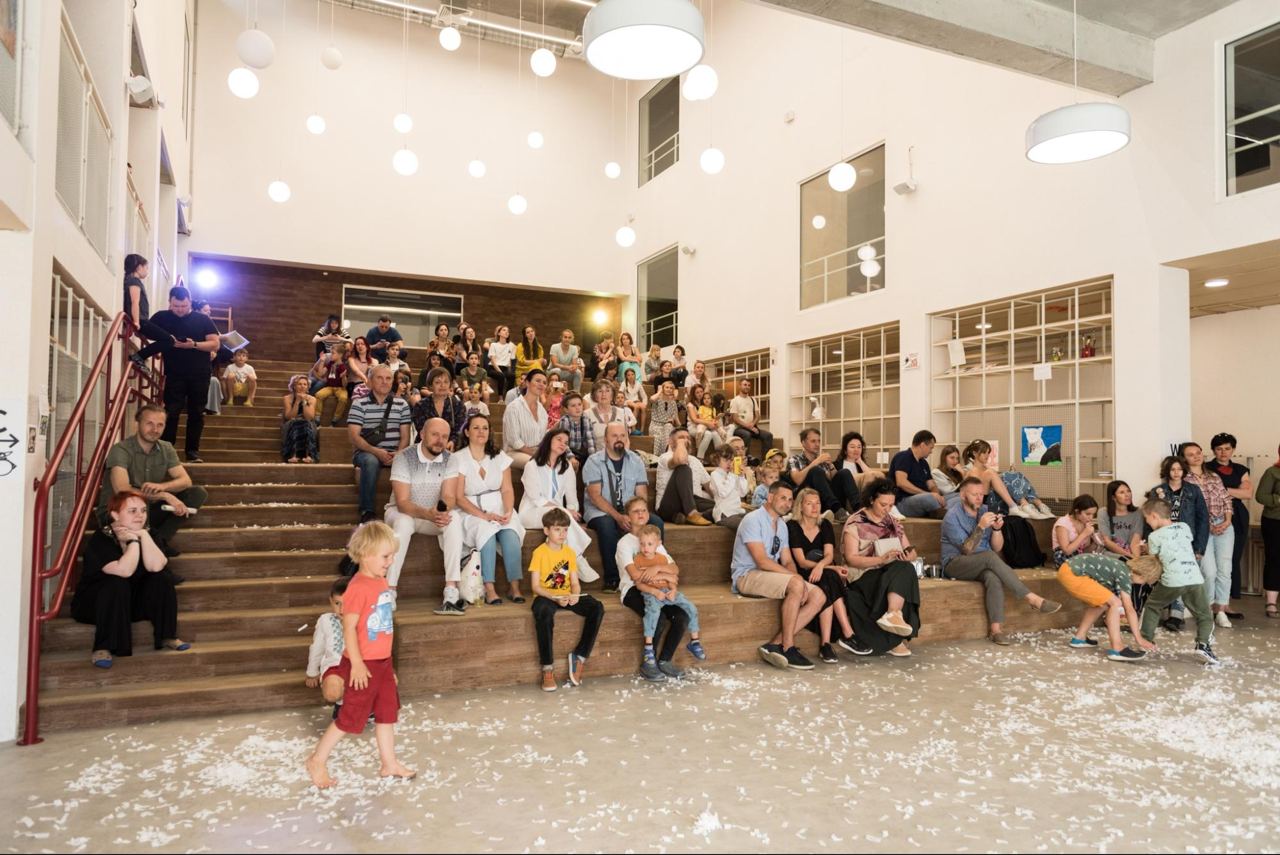 |
|---|
| Celebration of the end of School year, June 2022 |
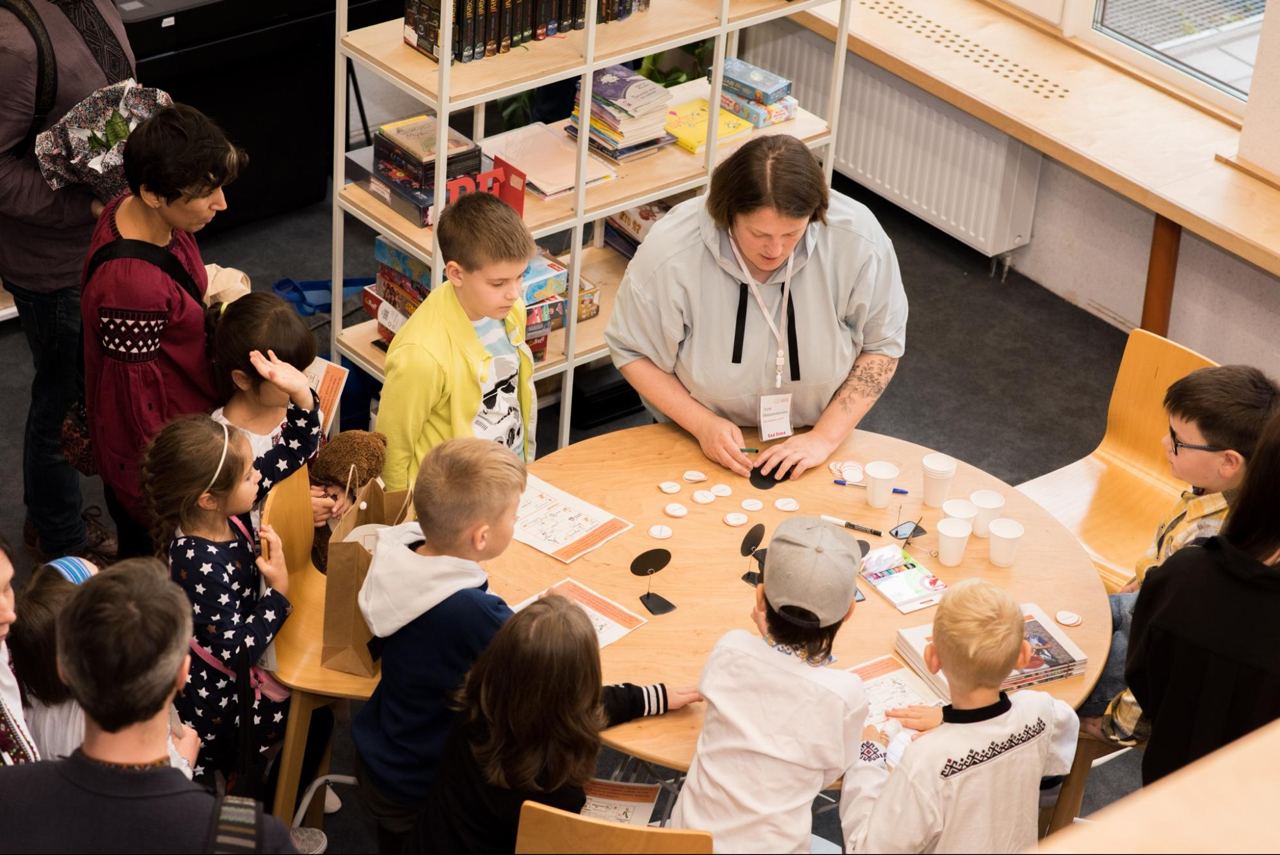 |
|---|
| Spilno.School has a lot of space for games and self-education |
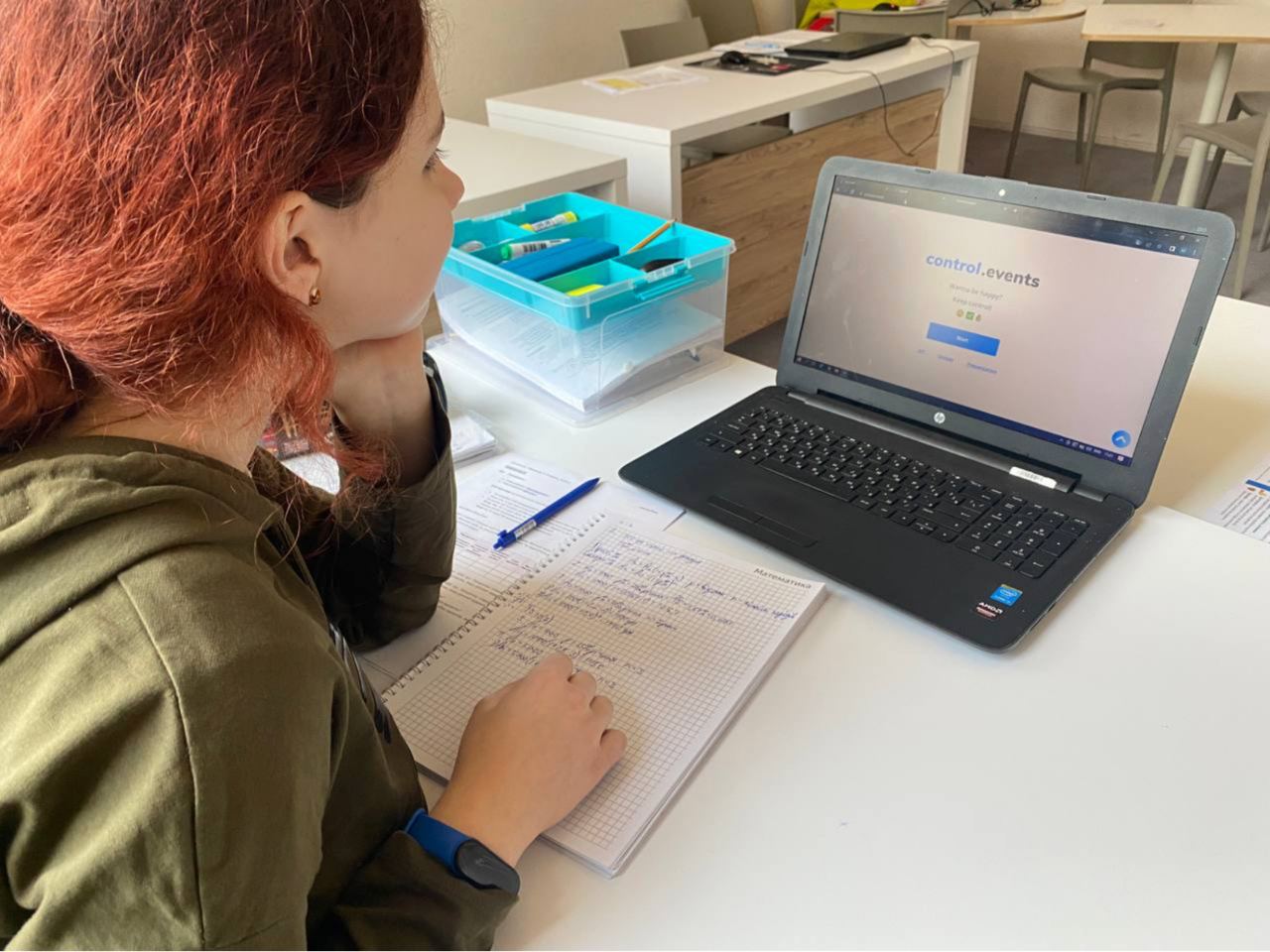 |
|---|
| Margaryta Lubomudrova (9-th grade student) logs in to her “Personal account” in Simulator.Company |
 |
|---|
| Mathematics competencies matrix for each grade of the Spilno School |
Do you prefer online or on-site education at the Spilno.School?
We do blended learning, or rather, hybrid learning. We don't just mix online and offline in certain proportions. Our task is to create an ecosystem and a comprehensive educational environment. There are processes that are best done on the online platform. This can speed up, say, assessment or access to content. But there are things that happen more efficiently through direct contact between the teacher and a group of children, or students working in pairs or in teams, etc.
Spilno.School space looks quite unusual. More like Google office. Why is that so?
There is a saying that there are actually three "teachers" in a school: the teacher, other students and the space in which the learning process takes place. We designed the school based on an innovative educational concept. Therefore, we needed multifunctional spaces that could be flexibly used for the teacher's work with the children and for the children themselves.
We also have classrooms, but activities that take place there contribute to not more than 10% of all educational processes. At Spilno.School students have their own communities, places for individual work and work in groups of different sizes – from 8 to 70 children. That is a comfortable approach to work in a SCRUM mode.
By the way, we have adapted the SCRUM methodology and have been using it as an educational framework since 2017. Physical space, as well as virtual space, are all components of the environment that creates a certain integrity. The quality of children's education depends on the quality of this environment. And everything is important in it, because everything is interconnected. With the help of Simulator and Corezoid, we plan to collect data from various sources so that the students, parents and team can clearly see the whole picture at any time.
With the help of Simulator and Corezoid, we plan to collect data from various sources so that the students, parents and team can clearly see the whole picture at any time.
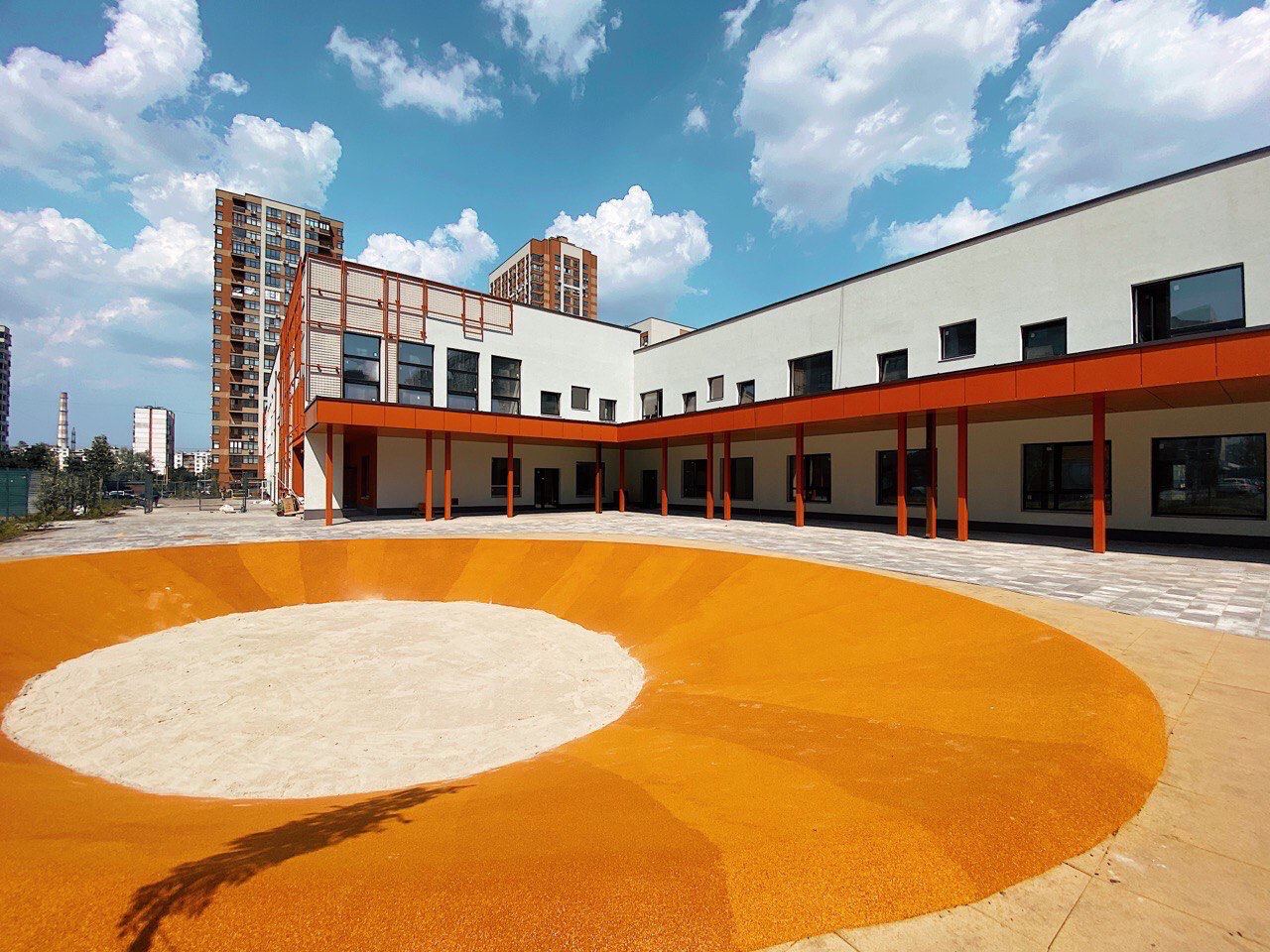 |
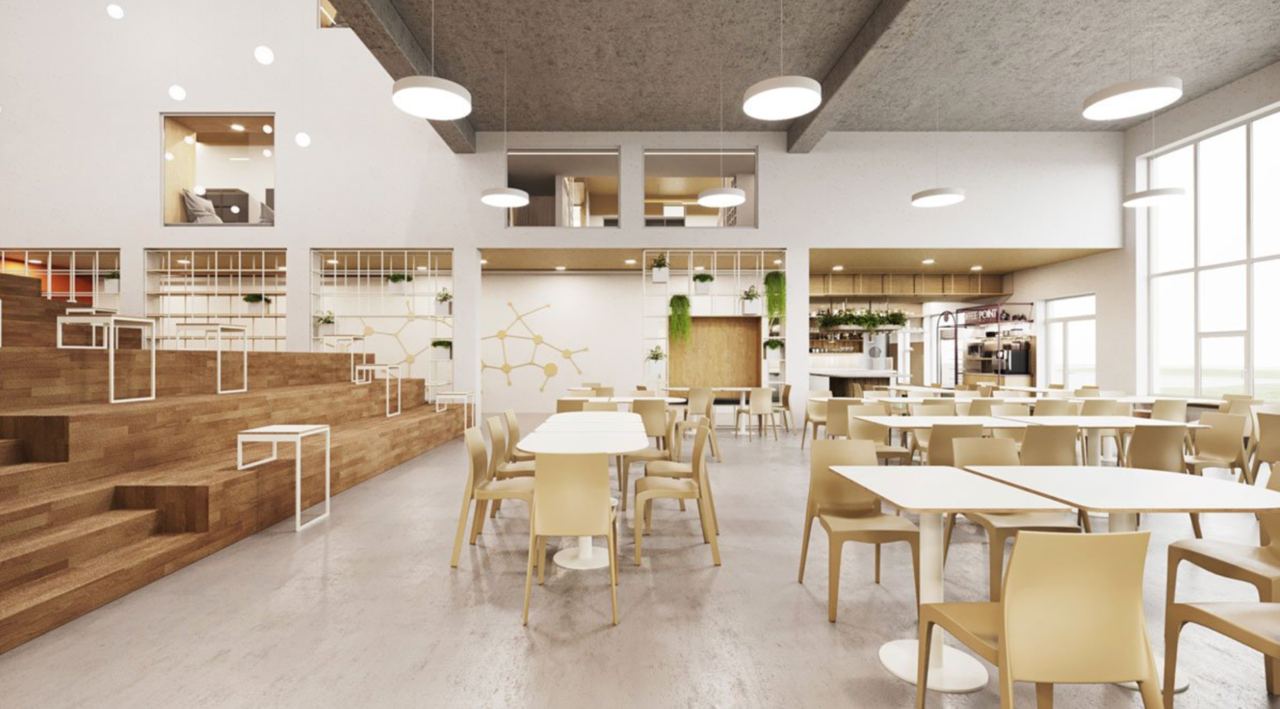 |
|---|
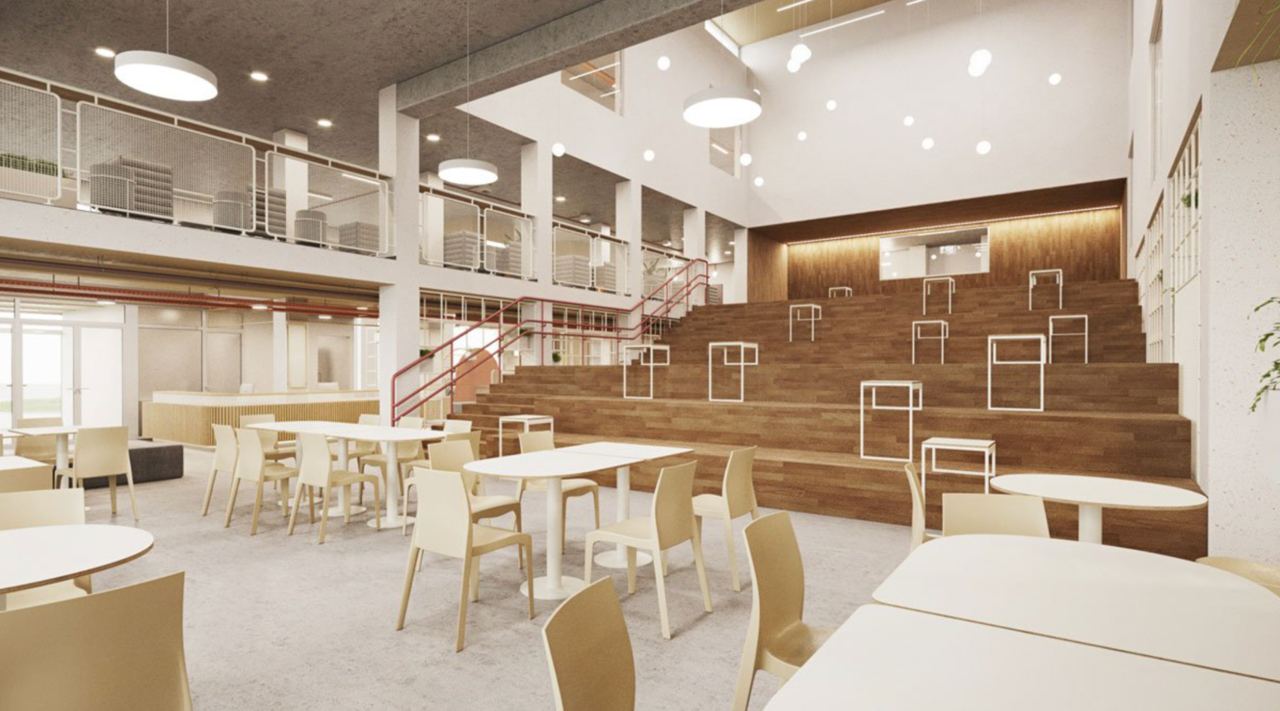 |
 |
|---|
Spilno.Schol was built from scratch to create the space aimed at developing certain skills and competencies. Photo: Khmarochosy
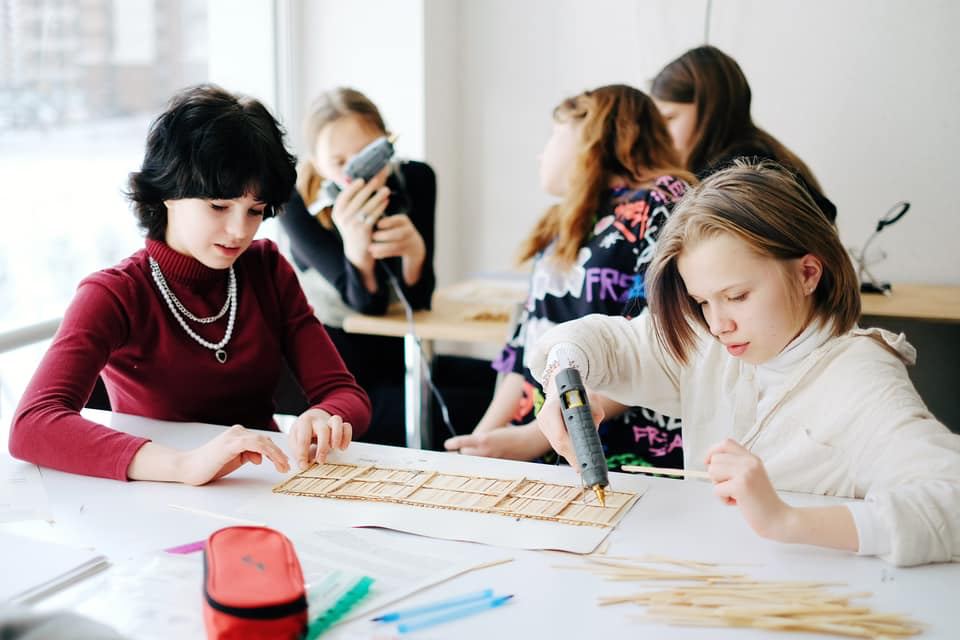 |
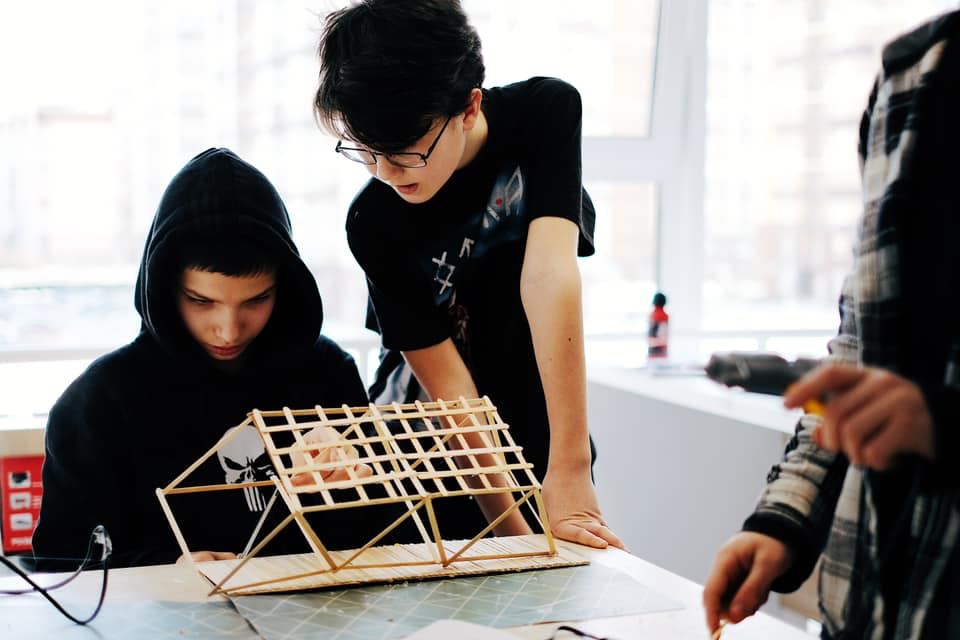 |
|---|
Science workshop
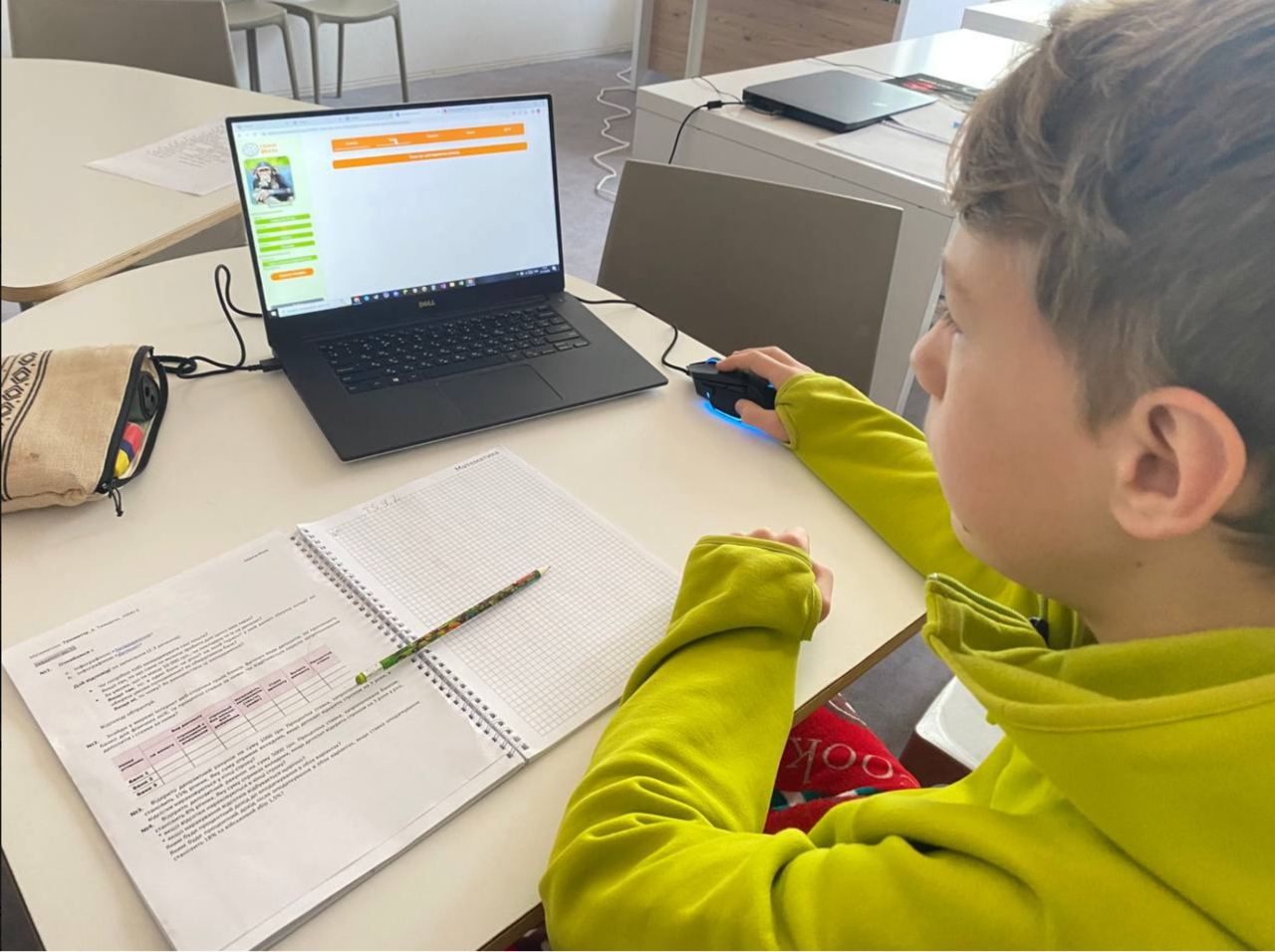 |
|---|
| Egor Smyrnov (8-th grade student) logs in to his personal Account at Simulator.Company platform |
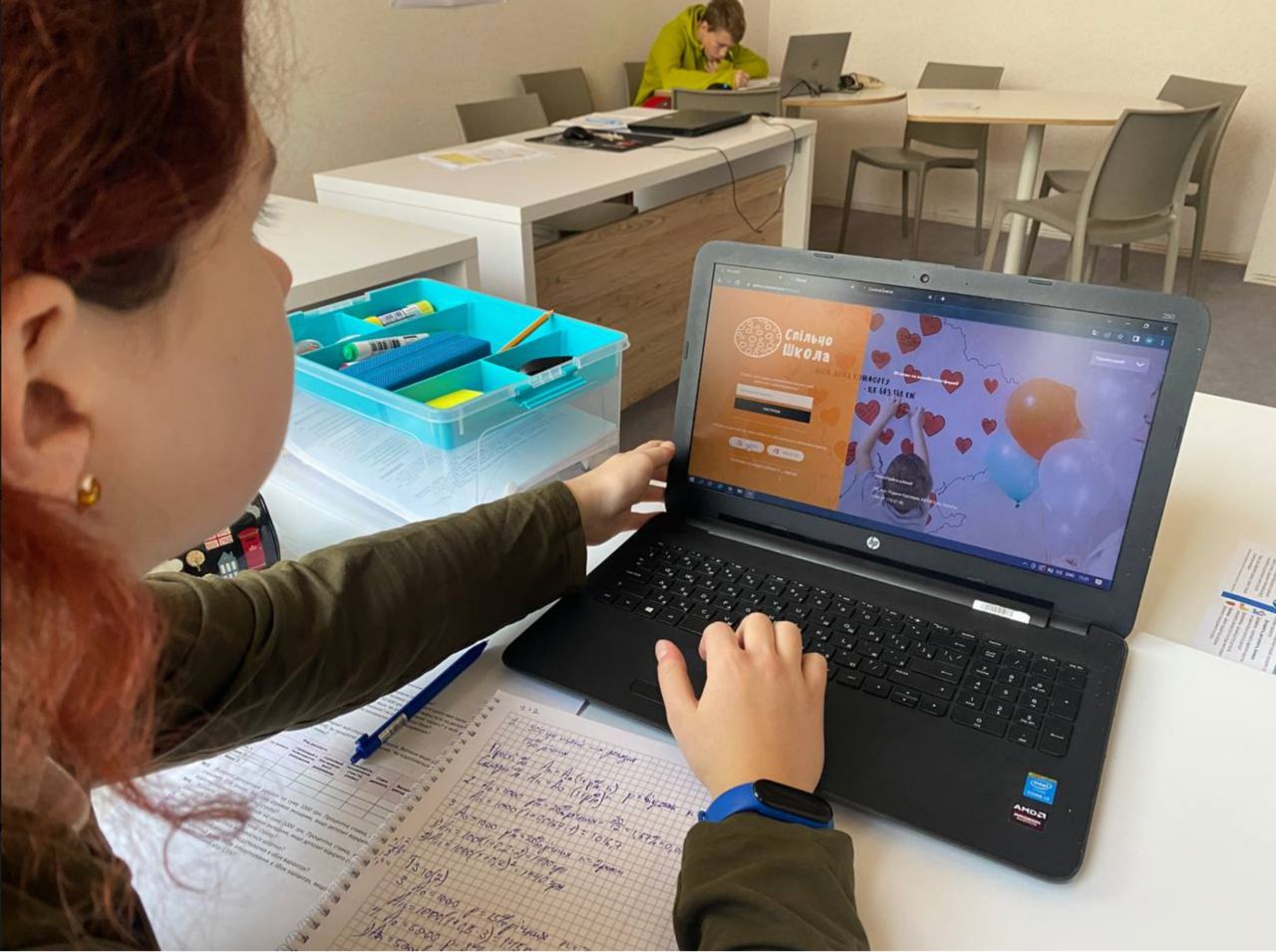 |
|---|
| Margaryta Lubomudrova takes online courses |
Tatiana Mazur (Spilno.School Tutor): the trajectory of the student's movement "in the digital world" is very important for the teacher. Understanding this trajectory allows you to track student progress and constantly improve content.
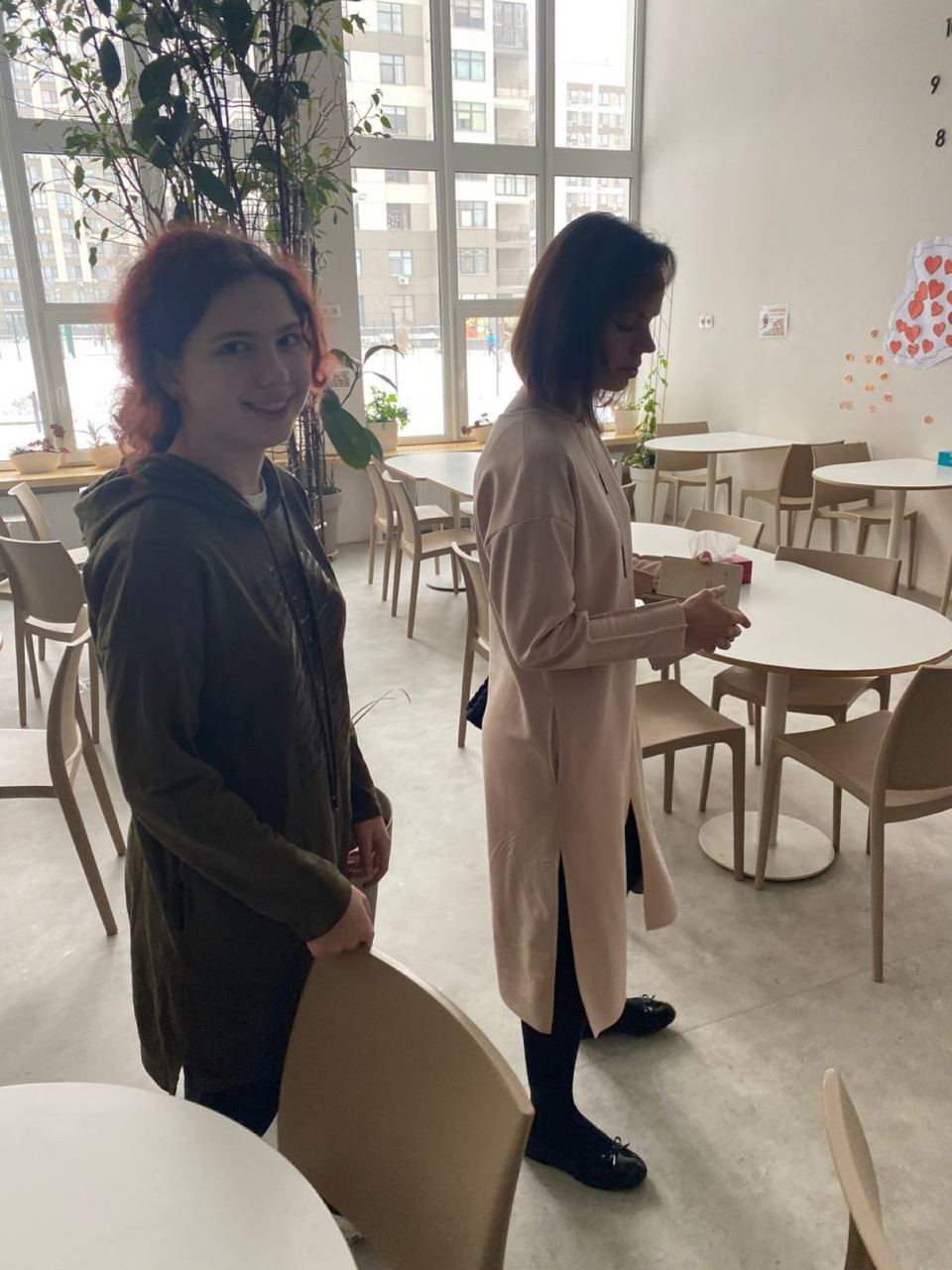 |
|---|
| Margaryta Lubomudrova (9-th grade student) and Tetiana Mazur (Spilno.School Tutor). |
Margaryta Lubomudrova: My first memory when we started integrating the new technologies at Spilno.School is that I started to type more, than to write.
Of course, it is convenient when everything is based on one digital platform. Previously, students were constantly carrying around different pieces of paper. If a piece of paper gets lost, you need to go and print a new one. Sometimes we did a task on paper, then took a photo of it and sent the photo to the teacher. It's not convenient. It's good when you have everything in digital form. And of course, it's convenient to see the whole picture of where you are.
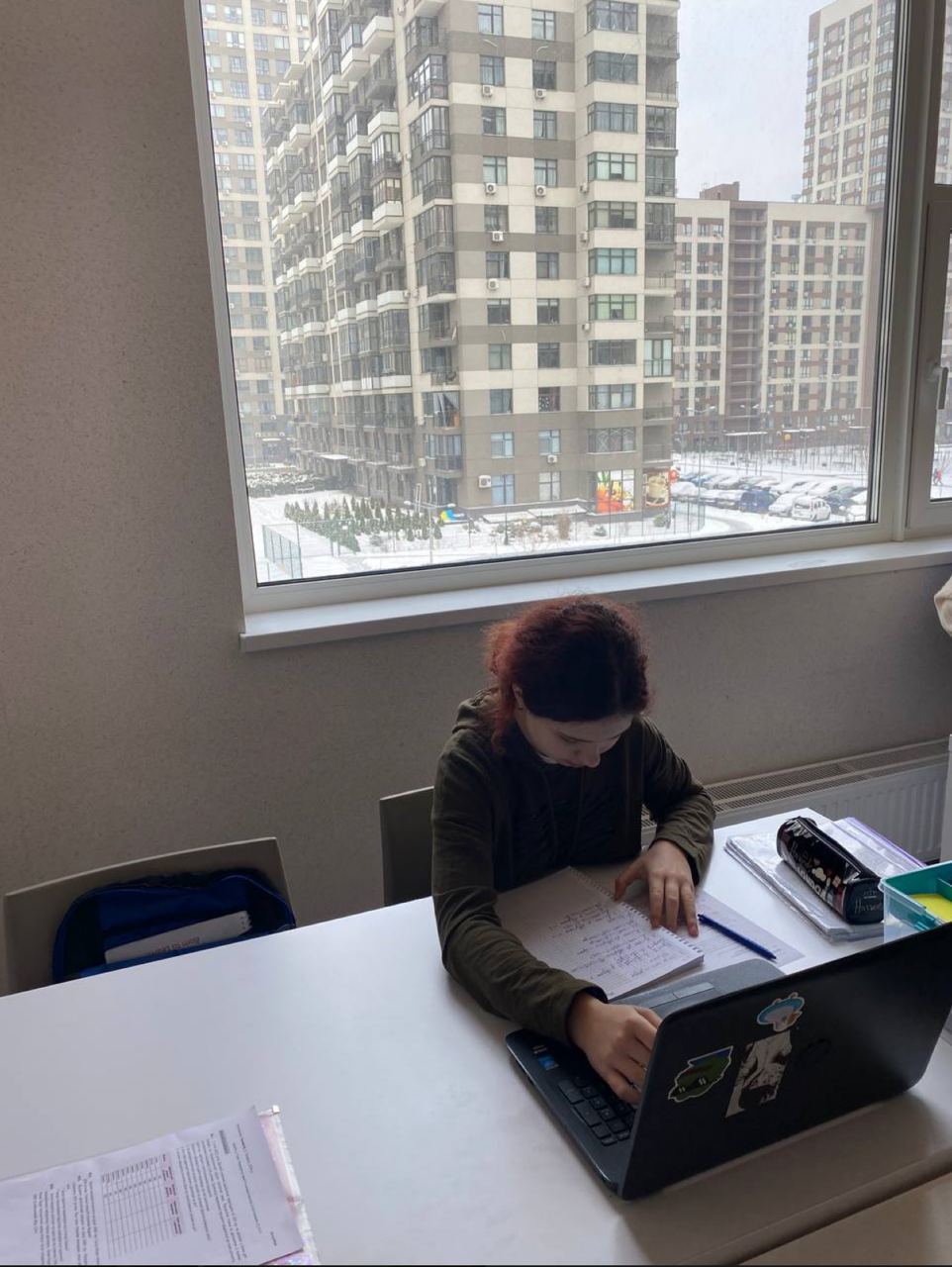 |
|---|
| Margaryta doing the individual task |
Do all the students have devices?
Margaryta: Yes. All the students at Spilno.School have their own devices. Laptops or tablets. Also we have the Wi-Fi coverage everywhere.
Anastasia Kyreeva: We are talking with you right now, but in fact, the school is under a full black-out. The city is not able to supply us with electricity. To solve this issue we have installed a fully automated smart system that covers our critical energy consumption needs. It includes several powerful batteries, an inverter and solar panels on the roof. Even now, during the winter period, 3 hours of sunlight a day is enough for us to continue our studies.
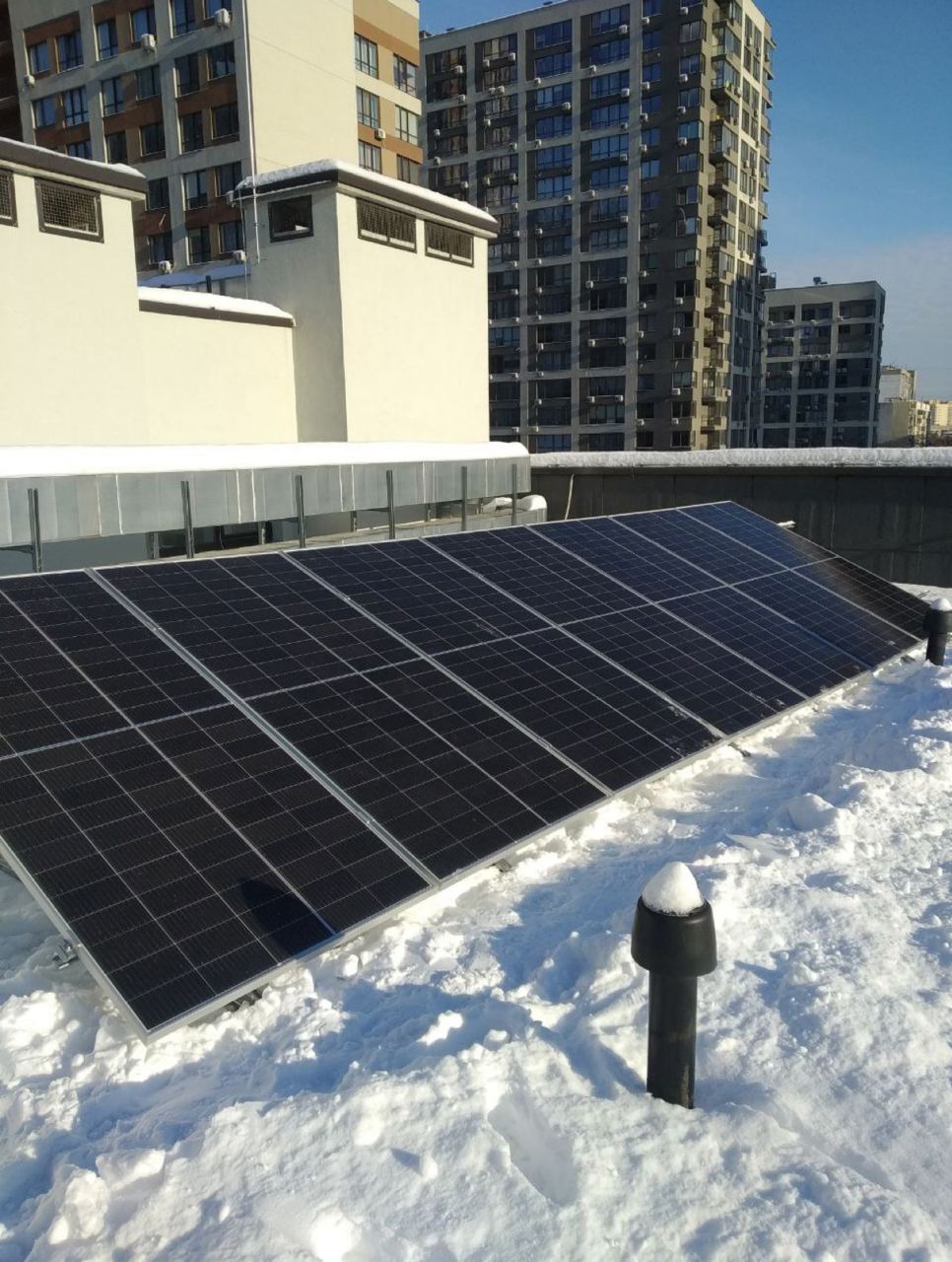 |
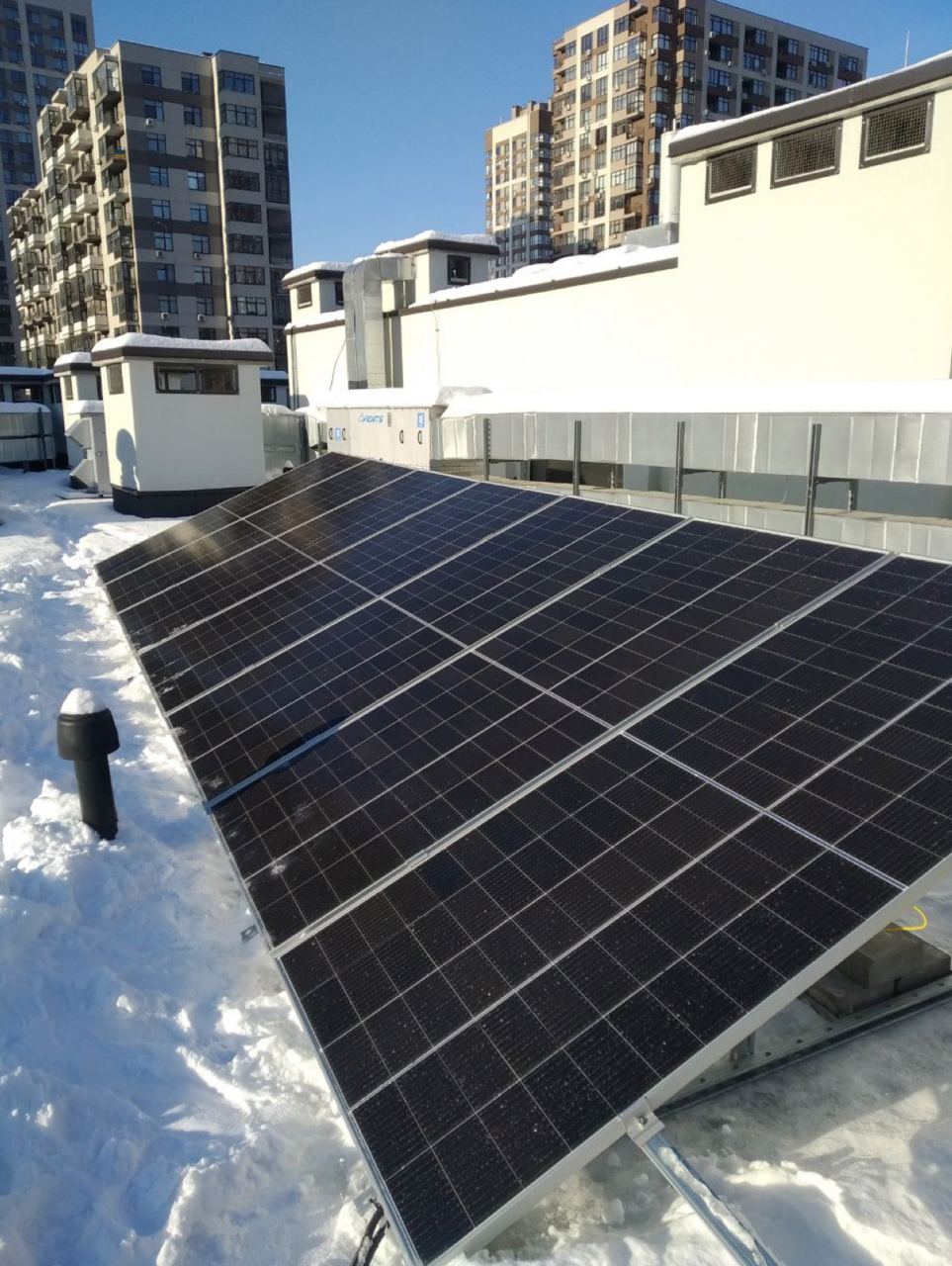 |
|---|
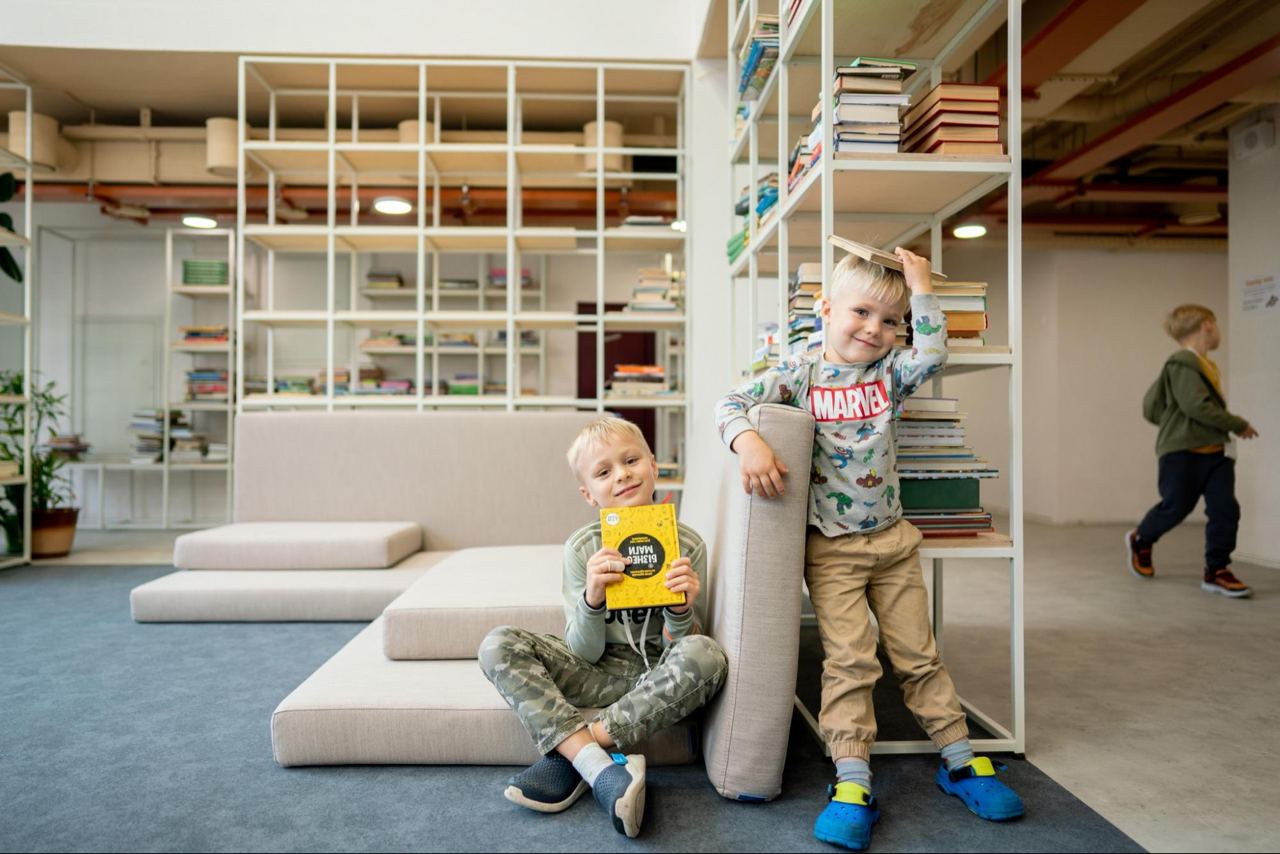 |
|---|
| At Spilno.School we have a lot of cozy places, where pupils can read books, watch online videos and complete individual tasks |
Do parents have access to the student's "Personal account"?
Anastasia Kyreeva: At the end of each academic cycle (it is approximately 6 academic weeks) – we send parents a letter with information about how the child is performing, about his progress both on digital platforms and offline.
And this is another advantage of Simulator technology. In other platforms, the default settings are that parents can login at any time and see what the child is doing, what grades he has.
But the philosophy of the Spilno.School is that the student is an Actor in the process of his own learning, so he has a certain autonomy. The student moves on his own trajectory within the educational environment that we have created.
If parents have absolute access to all data about the child's education, then the responsibility for education gets transferred from the child to the parents, who begin to control the kid, push him and try to manage. If the student's private boundaries are constantly violated, this reduces independence. The student ceases to be an Actor and starts being an object of control.
But at the same time, it is the parents who are responsible for their child, so they should be informed. We removed the ongoing parental control from the equation, but we left the monitoring component. The child has enough time and space to act independently: to push the boundaries, experiment, and apply various approaches to problem solving.
At Spilno.School we believe that the school from the 1st to the 9th grade is exactly needed for the child to achieve a certain autonomy. After all, at the end of secondary school - and this is approximately at the age of 16 - the child receives a passport and becomes a full-fledged Actor of the civil society. And it doesn't happen automatically. The student needs to make his portion of mistakes. The task of the school is to create this sort of environment, safe on the one hand, and welcoming experiments, on the other hand. Crossing the boundaries of what is allowed in adult life can have bad consequences.
 |
|---|
| In order to complete the learning mission, a student needs maps, playground and the autonomy |
Using Simulator, we can flexibly configure the necessary access rules and give children a sense of independence during their educational process. The student has the opportunity to move, achieve some intermediate result, talk with parents, teachers, and then move again at his own pace. If we talk about the development of competencies, “learning maps” are important for us. "Competence" is not only "I know", but also "I can".
For example, such a competence as "critical thinking" is well developed through the Science course. I mean such skills as "to compare", "to analyze", “to interpret data sets".
Sometimes it is difficult to use the concept of "Subject", when we talk about the lessons. During the “Science” course we learn about optics, biology, physics, and chemistry at the same time. Integrated courses do not exist in paper textbooks. Unique educational content is created by the teachers of the Spilno.School. These are video, audio, texts of varying complexity, project evaluation criteria and invitations to work with experiments, quizzes, cahoots, videos, and interactive tests where, for example, you need to match certain definitions and concepts.
Integrated courses do not exist in paper textbooks
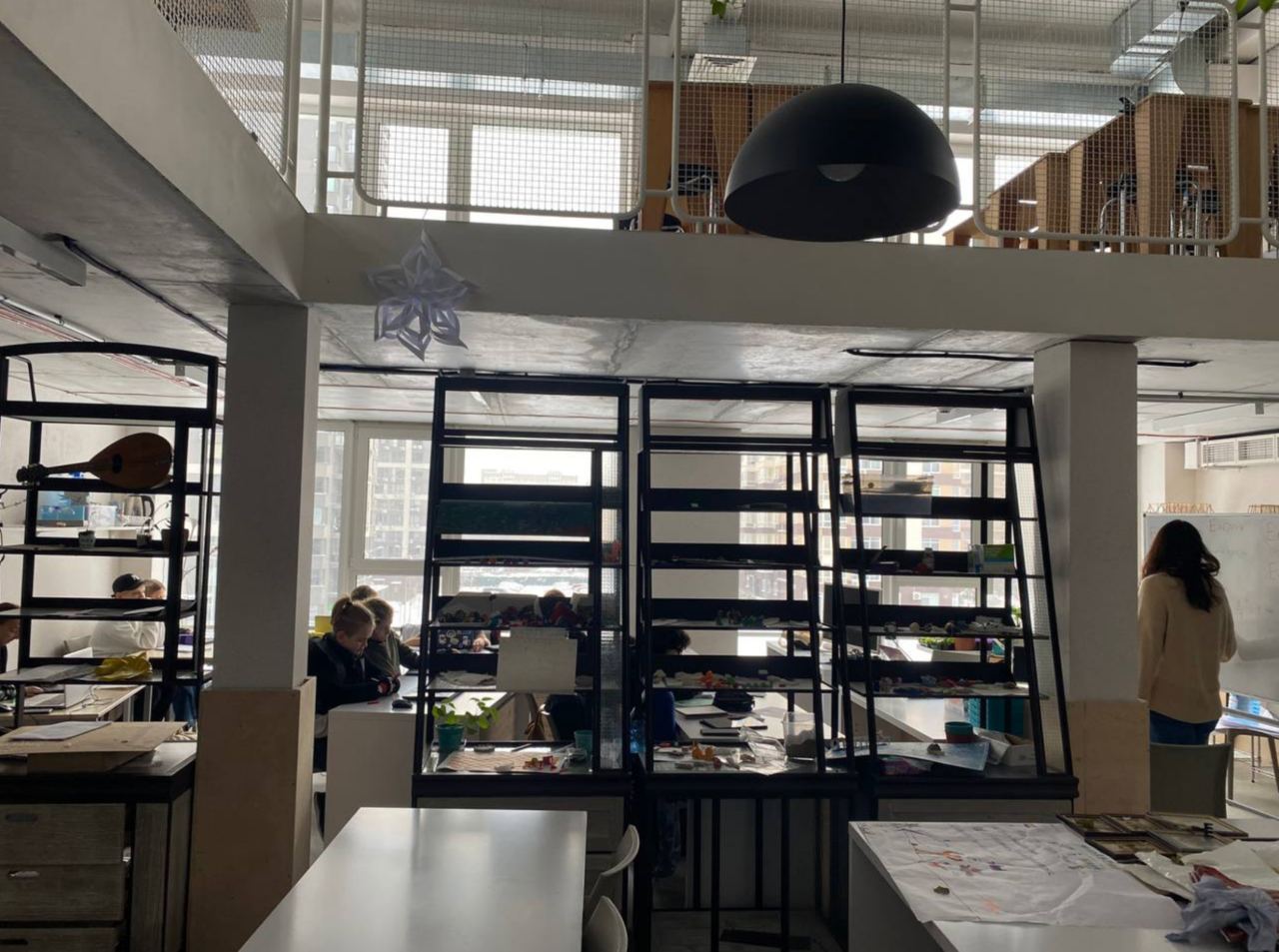 |
|---|
| Workshop, where the Science courses take place |
Ideally, educational content should look like longreads in modern online media: here is some text, here is a video with a built-in test, here are open questions for self-study, here are tasks for offline plus a self-test.
The end-goal of the Spilno.School is to create such an integrated environment for education. We want to provide students with a broad scope of educational content. Someone will move faster, others – slower. It is normal.
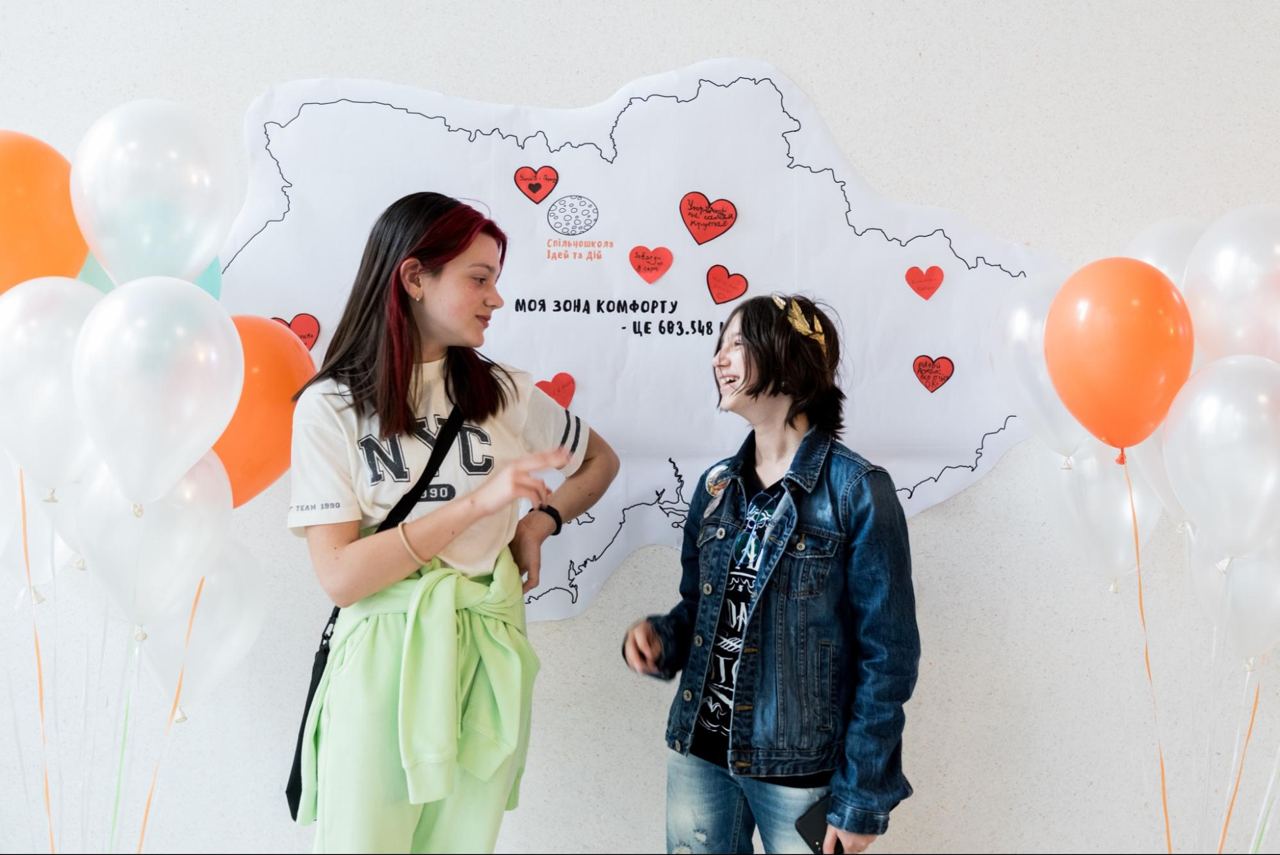 |
|---|
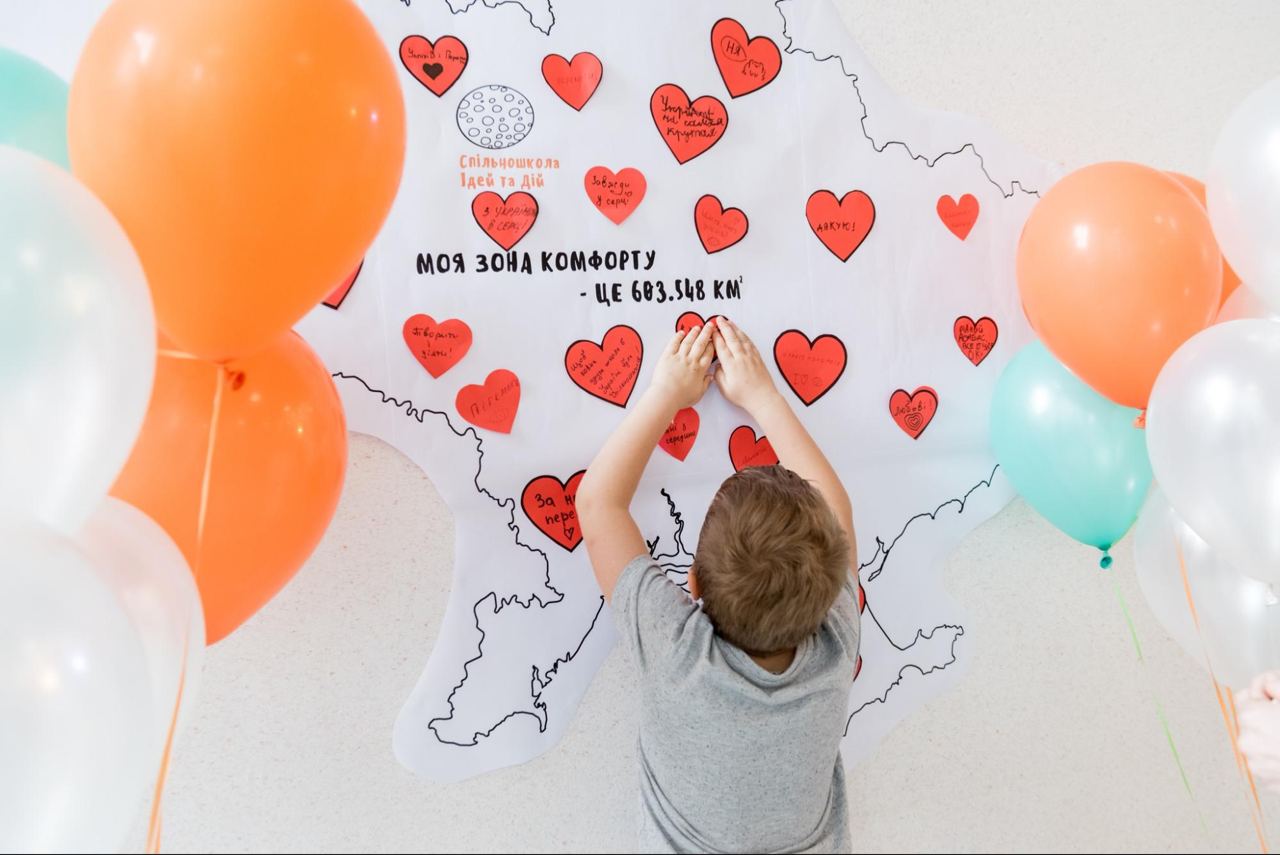 |
|---|
| Anastasiya Kireeva: "At the end of secondary school at the age of 16, a child receives a passport and becomes a full-fledged Actor of the civil society." |
It is not easy to explain why Spilno.School works in this way and how all this blending of various processes and tasks work (I explain some things in detail in my book “Children, Parents, School: Metamorphoses. Download here.) Everything that we usually know from our own experience about school does not fit. Education is undergoing a paradigm shift. At the same time, it is embedded in changes in social phenomena and structures. And it all started because of the rapid development of technologies. We're really innovating in education, and it's not about technical capabilities at all.
But now we want to combine our innovative mindset with innovation in technology as well. That is why we were not satisfied with any of the available software solutions for educational institutions and children's education. Therefore, here and now, together with Corezoid and Simulator.Company, we are starting a new page in our history.
